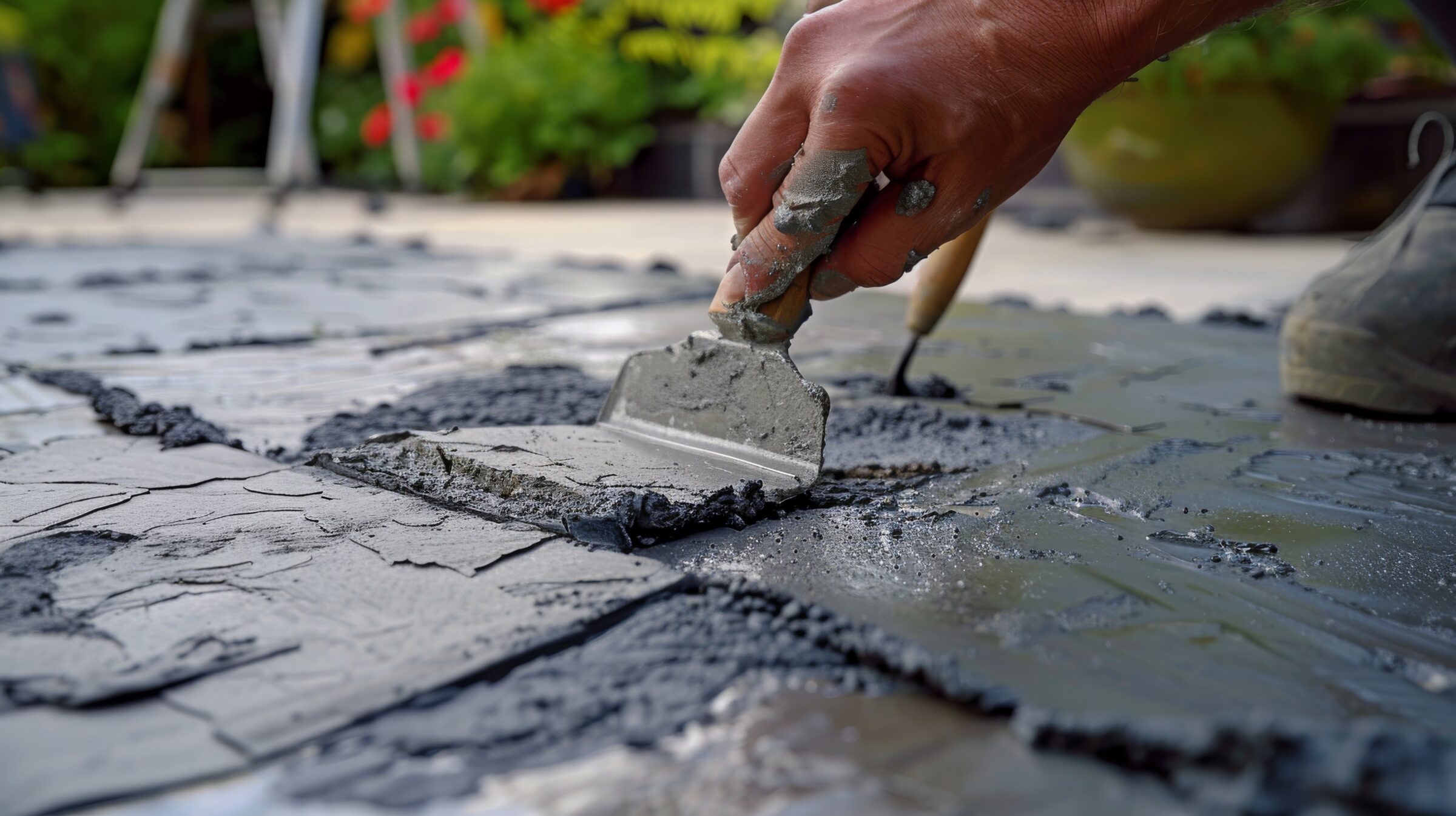Spring Repair Guide: Addressing Winter Concrete Damage
January 6, 2025

Concrete surfaces are constantly impacted by winter weather due to the continuous freeze-thaw cycles. Timely repairs can prevent greater damage and restore appearance and functionality as spring arrives, but it’s necessary to explore the influence that winter climates have on concrete and offer practical suggestions to properly handle these problems.
Understanding Winter Damage
The damaging effect that winter has on concrete usually results from freezing temperatures, moisture intrusion, and the use of de-icing agents. Common issues such as scaling, spalling, and cracking compromise the look and structural integrity of concrete surfaces.
Typically brought on by water freezing throughout the concrete pores, scaling is the flaking or peeling of the surface layer. Conversely, spalling causes holes and craters, which weakens the concrete, while regular freeze-thaw cycles often produce cracks because of water expansion. Unfortunately, if ice removal agents are used improperly, these issues are aggravated by increasing moisture penetration and further damage.
Assessing Damage
Before starting repairs, it’s important to assess the degree of winter-related damage. Begin with a visual check to uncover surface flaws, discoloration, and cracks. While hairline cracks may not necessarily be dangerous, deep, expanding fissures indicate structural problems. The spalled areas require attention since they expose underlying layers that are prone to more damage.
Keep in mind that large or complicated problems may require a specialist, especially if structural integrity is evident. Professional experience typically leads to a correct diagnosis as well as tailored repair solutions.
Preparation for Repairs
Efficient concrete restoration begins with the right preparation. Carefully clean the affected area to remove loose particles, trash, and dirt. Pressure washers or wire brushes also help to provide a clean surface for materials to adhere to. But be mindful of safety; wearing gloves, goggles, and protective gear reduces chemical and tool hazards.
The choice of repair material is just as crucial. For tiny cracks, epoxy or polyurethane-based fillers provide great adhesion and durability. For significant damage, consider polymer-modified patching chemicals, which offer exceptional resistance to environmental stresses.
Repair Techniques
Apply the selected material following manufacturer recommendations is key. To guarantee proper application for cracks, fill and level the surface with a trowel. In order to restore the original surface level, spalled parts may require additional patching. Before adding other protective measures, let the repair substance set for the appropriate curing time.
A primary follow-up procedure after repairs is sealing. The right concrete sealers stop moisture absorption and shield against future freeze-thaw cycles. Since they create a barrier for the concrete, which improves its resistance to extreme climates, penetrating sealers are particularly useful.
Preventive Measures
Preventing winter damage is obviously more cost effective than having to perform major repairs. Before winter, applying a protective sealant builds a barrier against de-icing chemicals and water. Appropriate drainage around concrete surfaces assists in avoiding water pooling, which lowers the risk of further damages.
Another important step is using safe de-icing techniques. For instance, products like magnesium chloride are less damaging to concrete than conventional rock salt. This aids quick snow clearance and limits de-icing applications to help reduce chemical exposure.
Sustainability in Repairs
In construction and associated repairs, sustainability is a primary focus. Low-VOC sealants and recycled aggregates are among environmentally friendly materials that perform well, while lowering harmful effects. Unique approaches include microbial-based repair treatments, which offer environmentally friendly substitutes for conventional approaches.
Apart from helping to protect the environment, investing in sustainable practices also leads to long-term financial gains. Innovative techniques and durable materials contribute towards a reduction of costs, reduction of repairs, and improvement of property value.
Spring is an ideal time to repair winter concrete damage so that both aesthetics and utility are restored. Understanding the underlying causes, performing extensive inspections, and using efficient restoration techniques will help property owners protect their concrete surfaces for many years to come.

